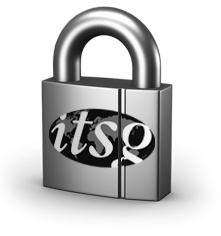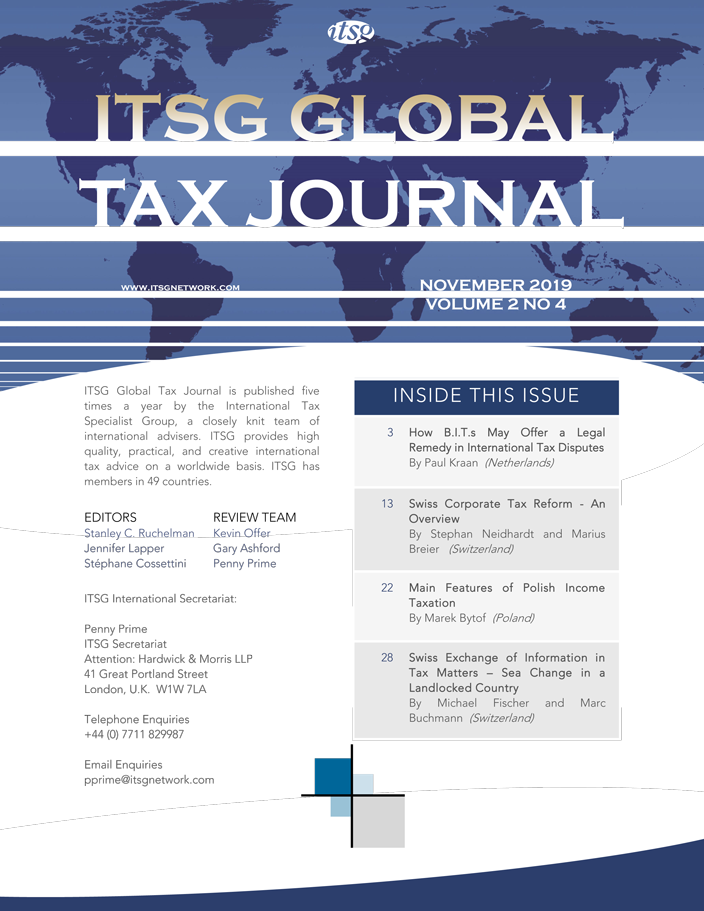Introduction
On 19 May 2019, a revised corporate tax reform was adopted by the Swiss voters in a referendum, the last proposal having been rejected by the Swiss voters in February 2017.
The reform establishes the basis for new rules on Swiss corporate taxation and repeals corporate tax rules that had attracted intense international criticism.
Switzerland will introduce new progressive measures, such as the patent box regime and an additional R&D deduction, which are compatible with international standards and which should allow the country to defend its traditional premium ranking as a global business location.
This article gives an overview of the new regulations and measures provided by the corporate tax reform that will enter into force on
1 January 2020.
Repeal of special Cantonal Tax Regimes
Switzerland has been increasingly criticised for its special cantonal tax regimes — the main criticism being that the regimes were designed to attract companies with ‘mobile’ international activities and enabled them to shift profits without being subject to taxation where the profits were actually generated. As the criticism grew, the European Union went so far as to put Switzerland on a ‘grey list’ of countries with harmful tax regimes, while the O.E.C.D. and the E.U. called for their abolishment.
Countering the mounting international pressure, the corporate tax reform will repeal all of these special cantonal tax regimes, namely the holding, mixed, domiciliary and principal company regimes as well as the finance branch regime upon the implementation of the reform on 1 January 2020, allowing Switzerland to comply with the international standards of the OECD, EU and G20.
Step-Up as a Transitional Measure
To mitigate the effects of abolishing the preferential cantonal tax regimes, companies that currently benefit from special tax statuses under these regimes may apply a step-up as a transitional measure.
The step-up, which is only applicable on the cantonal and communal level, contributes to the taxation of hidden reserves and goodwill under the tax regime where they were created and thus avoids over-taxation. Under the regulations provided by the corporate tax reform, two step-up models will be applicable: These are, on the one hand, the ‘current law step-up’, which exists under present law and, on the other hand, the ‘new law step-up’.
According to the current law step-up, companies currently benefitting from a special cantonal tax regime may decide to disclose their hidden reserves and goodwill in a tax-neutral manner upon the abolishment of the cantonal tax regime and depreciate the disclosed hidden reserves and goodwill over the following years, thus reducing the corporate income tax burden.
The new law step-up enables companies currently subject to a special cantonal tax regime to apply a lower tax rate (special tax rate) for corporate income tax purposes for a period of five years following the abolition of the special cantonal tax regimes on 1 January 2020. The special tax rate can be applied within this period provided that the profits do not exceed the amount of hidden reserves and goodwill that will be determined by the competent cantonal tax authorities at the end of 2019.
Companies currently benefitting from special tax status should carefully weigh up both options for the step-up. The question of whether the current law step-up or the new law step-up will lead to lower overall taxation must be considered on a case-by-case basis.
Patent Box
As part of the reform, a patent box will be introduced on the cantonal or com munal levels. Under this measure, net gains on patents and similar rights will be up to 90% exempt from taxation. The cantons will decide on the specific exemption when incorporating the patent box into their cantonal legislation.
The patent box can be applied for corporate income that is allocable to patents, protection certificates, topographies, documents protected under the Therapeutic Products Act, reports protected under the Plant Protection Products Ordinance, and corresponding foreign rights. Copyrighted software is not included, unless it is embedded in a patented product or protected by a patent abroad.
The net gains on patents and similar qualifying rights are calculated using the so-called residual method. Under the residual method, the starting point is the total profit of the company. All profits not related to patents or similar rights are deducted from the total profit and are subject to ordinary taxation.
In order to determine the remaining net profit in the patent box, the so-called Nexus quotient must be calculated in line with the O.E.C.D. considerations. The Nexus quotient is the ratio between the qualifying research and development (R&D) expenses (potentially multiplied by 130%) and the total R&D expenses. The qualifying R&D expenses include expenses for R&D conducted by the company itself in Switzerland, R&D conducted by third parties resident in Switzerland or abroad, as well as R&D conducted by group companies resident in Switzer-land. The exemption is only applicable to the patent box profit to the extent of this ratio.
Furthermore, it should be mentioned that upon entry into the patent box, all expenses related to the qualifying I.P. which were deducted for tax purposes over the last ten years prior to the patent box entry must be singled out. Such expenses were deducted under the ordinary tax status, whereas the related income will benefit from the reduced taxation in the patent box.
The cantons will adopt different approaches to deal with these expenses. In some cantons, for instance, R&D expenses incurred prior to the entry of the patent box will be added to the ordinarily-taxed profit by means of a taxed hidden reserve. This allows for a future depreciation of the taxed hidden reserve in the tax balance sheet, whereby the respective depreciation expense will be included in the patent box.
ADDITIONAL R&D DEDUCTION (R&D SUPER-DEDUCTION)
In order to promote R&D and dampen the effects of the abolition of the preferential cantonal tax regimes, an R&D ‘super-deduction’ will be introduced.
The additional R&D deduction is restricted to cantonal and communal taxes only and is de-pendent on voluntary transposition of the measure into cantonal law. The term ‘R&D activities’ was very broadly defined by the legislator and is based on common O.E.C.D. standards. Therefore, companies may benefit from this super-deduction for basic research, scientific application, and knowledge-based R&D.
Regarding the detailed calculation of the basis for the R&D super-deduction, one must distinguish between
‘internal’ R&D costs for R&D activities performed by the company itself and ‘external’ R&D costs for R&D activities conducted by third parties on behalf of the company.
Regarding the ‘internal’ R&D costs, the basis for the super-deduction is calculated as the R&D-related staff costs (including salaries and social security contributions) of the company plus a lump-sum mark-up on staff costs of 35% (representing a lump-sum amount for other ‘internal’ R&D costs of the company).
Regarding the ‘external’ R&D costs, the basis for the super-deduction is calculated as 80% of the expenses for R&D activities performed by third parties resident in Switzerland. R&D expenses invoiced by third parties resident outside of Switzerland do not qualify for the R&D super-deduction.
The total amount of the ‘internal’ and ‘external’ R&D expenses eligible for the super-deduction is subsequently multiplied by a factor not exceeding 150%. The specific factor for the R&D super-deduction is determined by the cantons.
The following table depicts a sample calculation for a R&D super-deduction with a factor of 50%:
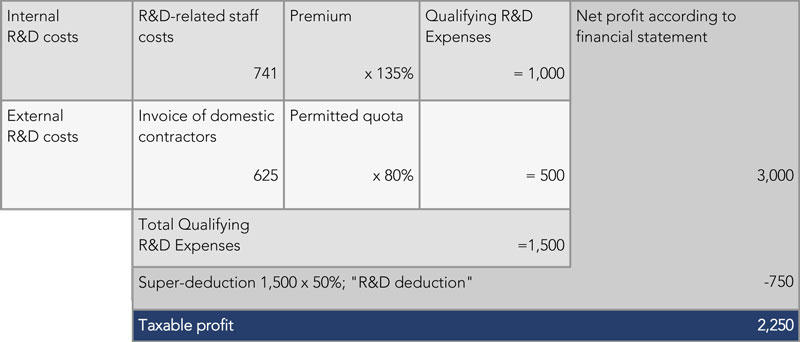
Notional Interest Deduction (N.I.D.)
An optional N.I.D. for cantons with a specific minimum tax rate (high-tax cantons) will be introduced. This allows for the introduction of a substitute measure to replace the existing privileged taxation regime for finance branches and finance companies. Furthermore, it reduces the discrepancies between the tax treatment of debt and equity financing, especially as it will only be applicable to excess equity that could be substituted by debt.
However, the specific requirements for the application of the N.I.D. are currently only met by the cantons of Zurich and Aargau. Further, only the canton of Zurich intends to actually implement this measure.
The N.I.D. will be applicable on the equity which exceeds the average equity required for business operations in the long term.
This excess equity is calculated by deducting the core capital from the effectively available equity (N.I.D. only applies if there is a surplus). The core capital is calculated by multiplying the assets by a given capital adequacy ratio.
The applicable interest rate will be based on the yield of ten-year Swiss Federal bonds. To the extent that excess equity is proportionally attributable to all kinds of receivables from related parties, a higher arm’s length interest rate may be applied (so-called margin taxation).
Overall Relief Limitation
The measures provided by the reform may be applied in combination. However, all cantons must implement a so-called overall relief limitation.
This relief limitation stipulates that, on the whole, the patent box exemption, R&D super-deduction, N.I.D. expenses, and depreciations in connection with the aforementioned current law step-up may reduce the corporate income of a company (corporate income before consideration of tax losses carried forward and without consideration of the measures themselves) by no more than 70%. The cantons may opt for a lower rate than 70% when incorporating the relief limitation into their cantonal legislation.
It is yet to be defined exactly how the relief limitation will be calculated, especially in the event that tax losses are carried forward on the level of the company. The relief limitation could, for example, be calculated as follows under the assumption of a relief limitation of 70%:
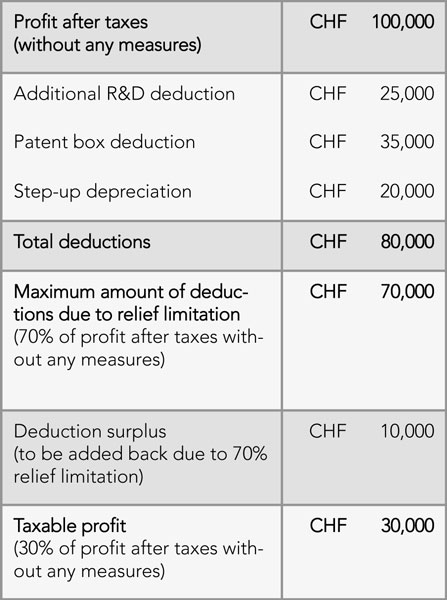
Capital Tax Relief
The cantons may introduce a reduced capital tax rate relating to equity capital invested in corporate equity interests, patents, and similar rights, as well as intra-group loans.
This constitutes an appropriate substitute for the abolished reduced capital tax rate for companies currently benefitting from one of the special cantonal tax regimes.
The canton of Zurich, for instance, intends to introduce a 90% deduction on equity attributable to participations, loans to subsidiaries and patents.
Extension of the Lump-Sum Foreign Tax Credit
The lump-sum foreign tax credit prevents international double taxation. Its application will be extended to Swiss permanent establishments of foreign companies.
Increase and Harmonization of Taxation of Dividends from qualifying Participations
The corporate tax reform leads to an increase and harmonization of the taxation of dividends arising from qualifying participations (ownership of 10% or more of the company’s capital) on the level of individuals resident in Switzerland receiving the qualifying dividends.
Currently, on the Federal level, the tax base for such qualifying dividends amounts to 60% of the gross dividend amount if the qualifying participation is held as a private asset and 50% if the qualifying participation is held as a business asset. Said amounts are increased to a standard rate of 70% on the Federal level.
On the cantonal level, the tax base for qualifying dividends varies from canton to canton. The corporate tax reform, however, implements a minimum tax base for qualifying dividends on the cantonal level of 50%. Therefore, the cantons may still set their own rates for the taxation of qualifying dividends provided that said rates are not lower than 50%.
Moreover, it should be noted that some cantons currently operate a partial tax rate system rather than the aforementioned partial taxation system. This means that a lower tax rate rather than a lower tax base is applied for qualifying dividend payments. The corporate tax reform, however, will harmonize the taxation of qualifying dividends by stipulating the application of the partial taxation system both on the Federal and cantonal or communal levels.
Capital Contribution Principle Restrictions
The capital contribution principle will be restricted for companies listed on Swiss stock ex-changes. A ‘Repayment Rule’ and a ‘Partial Liquidation Rule’ will be implemented, taking into account the principle of proportionality.
Under Swiss law, dividends paid from retained earnings are subject to Swiss withholding tax at source as well as income tax on the level of individuals resident in Switzerland receiving the dividends. If, however, the dividends are paid from capital contribution reserves, the dividend payments trigger neither Swiss withholding tax nor income tax.
Due to the newly introduced Repayment Rule, companies listed on Swiss stock exchanges may only repay capital contribution reserves (without triggering withholding and income tax implications) if they pay at least an equal amount of dividends from their retained earnings (triggering withholding and income tax implications) provided that such retained earnings are available. The Repayment Rule will also apply to the issuance of bonus shares and an increase of nominal value. However, intra-group dividends will not be covered by this new rule.
In accordance with the Repayment Rule, the Partial Liquidation Rule stipulates that in the case of a share buyback programme with a liquidation of the shares bought back, the company buying back the shares is obliged to charge at least half of the repurchase price against the capital contribution reserves. Swiss listed companies often distribute their retained earnings by means of a share buyback programme. This is due to the fact that, as a general rule, only Swiss institutional investors participate in such programmes as sellers. The Swiss institutional investors do not face any negative tax implications as they are entitled to a full refund of Swiss withholding tax and are not subject to individual income tax.
Without the additional Partial Liquidation Rule, Swiss listed companies could circumvent the Repayment Rule by distributing all their retained earnings by means of a share buyback programme. In a subsequent ordinary dividend distribution, they could distribute their capital contribution reserves without taking the Repayment Rule into account since there are no retained earnings left on the level of the listed company by the time the ordinary dividend distribution occurs.
Last, but not least, it should be noted that it could be beneficial for listed companies to con-vert existing capital contribution reserves into share capital. Such a conversion should not lead to any negative tax consequences, at least until such time as the Repayment Rule and the Partial Liquidation Rule enter into force on 1 January 2020.
This would allow listed companies to counter the new Repayment Rule and Partial Liquidation Rule by repaying such share capital to its shareholders in the future since a repayment of share capital, as opposed to a repayment of capital contribution reserves, is not affected by these new rules.
New Rules on Transposition
A ‘Transposition’ is a fact pattern pursuant to which an individual converts future taxable dividend payments into tax-free capital gains by selling a privately held participation to another privately held corporation that is personally controlled by the individual.
Under the current Swiss tax regulations, such a transaction leads to a requalification of the tax-free capital gain as taxable dividend income to the extent that the consideration received exceeds the sum of the nominal value and the capital contribution reserves if the percentage of the participation transferred is at least 5%.
In accordance with the new regulations provided by the corporate tax reform, this threshold of 5% for the participation transferred will be abolished. This means that even a sale of less than 5% to a personally controlled corporation can lead to a conversion of the tax-free capital gain into taxable dividend income.
Cantonal Tax Rate Reductions
Even though not formally part of the corporate tax reform, most cantons will lower their can-tonal corporate income tax rates as part of its local implementation.
In this respect, it should be noted that those cantons already applying relatively low corporate income tax rates will only reduce the tax rates marginally, if at all, whereas some higher tax cantons such as Basel-Stadt or Geneva will reduce their corporate income tax rates substantially.
The canton of Zurich intends to leave the applicable corporate income tax rate almost unchanged (while the applicable effective tax rate in the city of Zurich will be reduced from 21.2% to 18.2%) and focus on fully exploiting the opportunities created by the substitute measures under the reform instead (e.g., the patent pox, R&D super-deduction, or N.I.D.).
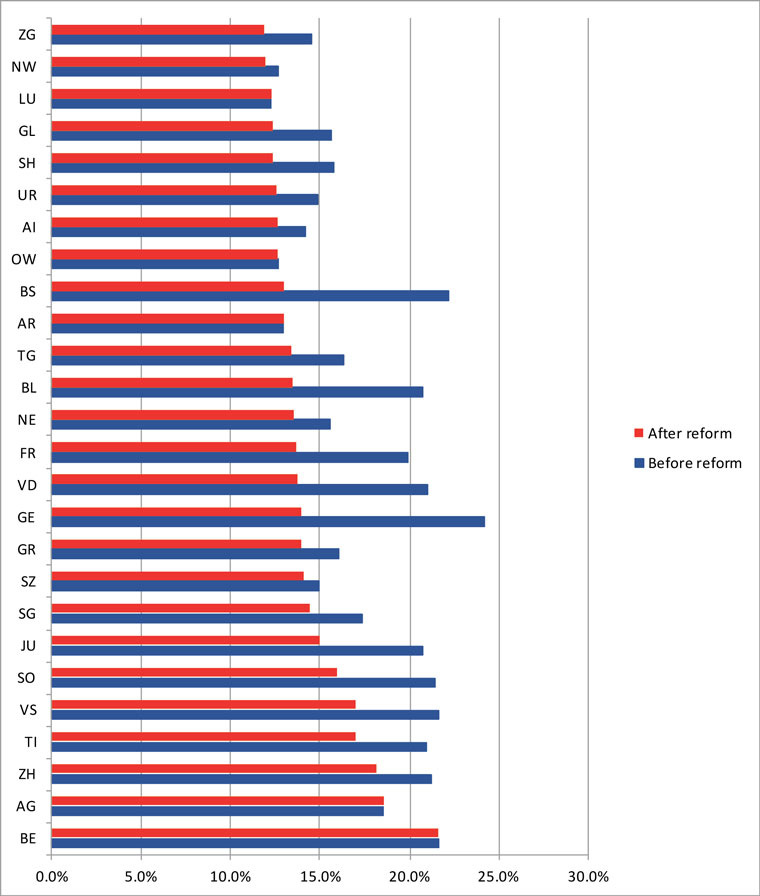
OVERVIEW
The following table provides an overview of the implementation of the corporate tax reform in the different cantons (only cantons printed boldly have already finally resolved their cantonal implementation of the corporate tax reform).
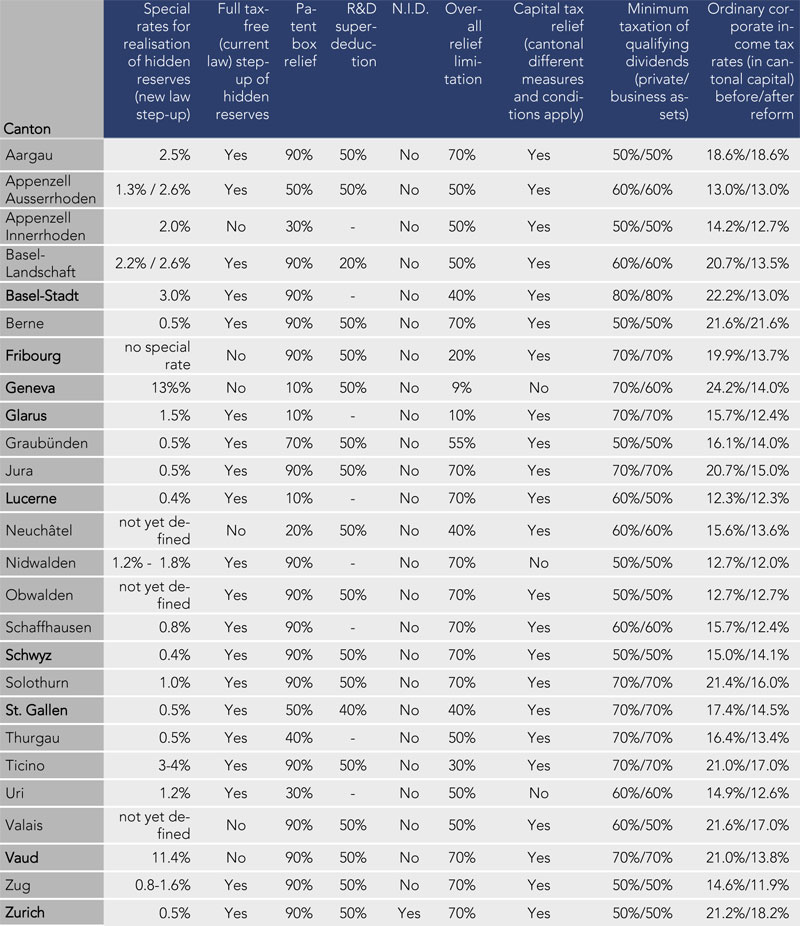
IMPLEMENTATION
The corporate tax reform will enter into force on 1 January 2020 on the Federal level. The provisions made by Federal law regarding cantonal tax regulations must still be translated into the cantonal tax laws of each canton.
As things stand at present, the respective cantonal implementations have already been resolved in nine can-tons (Basel-Stadt, Fribourg, Geneva, Glarus, Luzern, Schwyz, St. Gallen, Vaud, and Zurich). The other can-tons are at different stages of the legislative processes. However, most cantons plan to decide on the implementation laws (including the reduction of the corporate income tax rates) before the end of 2019 and implement them jointly with the Federal reform on 1 January 2020.
CONCLUSION
The popular vote on 19 May 2019 marked the end of a long-enduring political and legislative process. Switzerland will finally repeal the corporate tax rules that had attracted such intense criticism from other countries (some of this criticism dating back as far as to the pre-B.E.P.S. era).
The revised corporate tax reform implements transitional measures and new progressive instruments, such as the patent box and R&D super-deduction, aimed at ensuring that the abolition of the special cantonal tax regimes will be compensated. Furthermore, in the wake of its implementation on 1 January 2020, most can-tons will reduce — some significantly — their corporate income tax rates.
Therefore, the corporate tax reform ought to secure and increase Switzerland’s overall competitiveness as a business location with a view to innovation, value creation, and job preservation.
To ensure a smooth and tax-efficient transition to the post-tax reform environment, companies should analyse their structures and the impact of the new rules — especially the transitional rules — over the course of 2019 and take appropriate action.
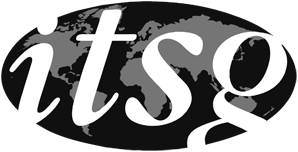
 Login
Login


















































